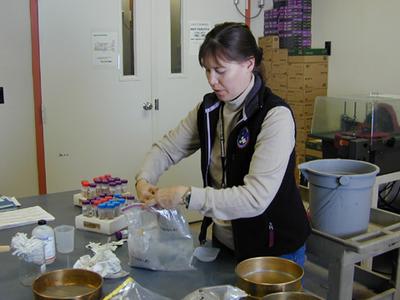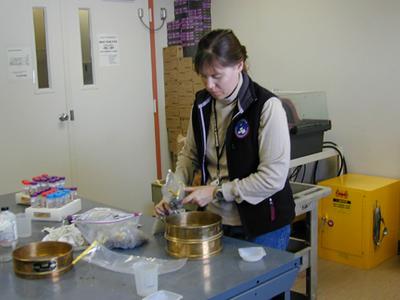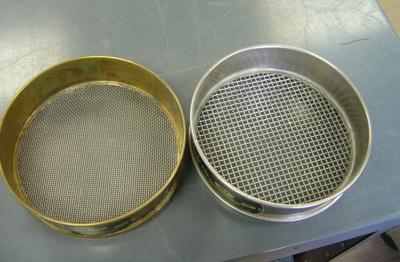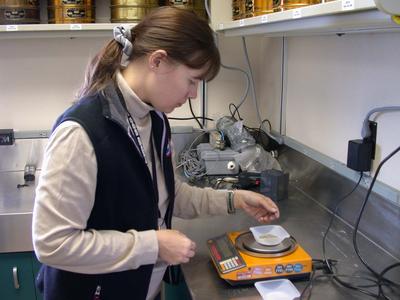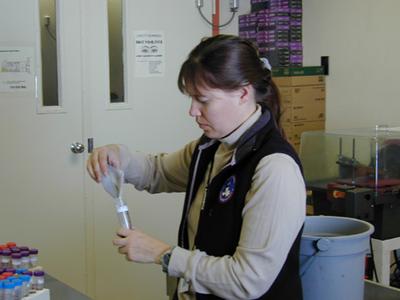
|
3 December, 2003Hurry Up and Wait! Well the snow has stopped falling and the sun is finally shining, but there are still a lot of grim faces around town. The road to the runway is still being cleared; meaning planes cannot take off and land, resulting in a backlog of people all over the place. For the majority of the season we are dependant on the military cargo planes. They provide us the personnel, supplies, and resources to function in such an extreme environment. While the icebreakers are another means of Antarctic transportation, they donít arrive until the end of the season, usually transporting back tons of trash and waste material that will be disposed of properly in the US. What would be another reason as to why the ships do not come until the end of the season? (Hint: what is happening to the sea ice during this time of year?). When the aircraft canít fly all we can do is wait. In addition to limiting the transportation of needed supplies, not flying affects the daily routine of a large number of McMurdo residents. People who normally work outside in remote areas or on the runways are stuck in doors. Pilots scheduled to fly the helicopters, twin otters, and Hercs have no where to go; and the scientists, who have spent years writing grant proposals to get a limited amount of time on the ice, cannot get out in the field. Since weíve been socked in for several days, there are a lot of unhappy people. Itís hard to find a seat in the galley, the rooms are at capacity, and the normally quiet library and computer labs have been full with people reading and surfing the internet as they have nothing else to do. This also affects those in Christchurch. There, bed and breakfasts are filled to the capacity with people trying to get down to the ice. Someoneís two-day layover has turned into 4 or 5 days, and as more and more people arrive in Christchurch the rooms begin to fill. When this happens, they often have to start combing groups into a single room. Waiting for weather to clear is part of life on the ice. One TEA teacher, Colleen Brogenski has really had to learn this lesson the hard way. She is here with a team studying Mt. Erebus. Colleen flew down on the same flight as I did and has yet to get out to the field. Nearly two weeks ago half her team was helicopter ed to the active volcano that rises just behind us. She and the rest of the team were to follow two days later. Unfortunately, Mt. Erebus has been covered with clouds making the visibility too poor to land. The weather in the valleys was OK, so we went out to the field and returned to find them still here. Each day they dressed in their ECW gear only to be disappointed again and again. Now itís been nine days and she and the rest of the team are still waiting for the weather to clear. You can read about her heartbreaking experience by clicking here. While our team has been relatively fortunate, this spout of bad weather has changed our plans. We had originally planned to spend a day or two in Wright Valley collecting soil in an area called the Labyrinths. The backed up schedule of people needed to get out has resulted in us postponing the trip until after the traverse. Unfortunately, Barb and I will not be able to be a part of this experience, as our stay in the Antarctic will have ended before the team goes out. Iím a little disappointed, as the labyrinths are supposed to be incredible. While waiting for the weather to clear is extremely frustrating, no one here argues the importance of waiting. McMurdo buildings named after former USAP employees and the two crosses visible from Hut Peninsula serve as reminders of the people who have lost their lives or become injured while here.
Contact the TEA in the field at . If you cannot connect through your browser, copy the TEA's e-mail address in the "To:" line of your favorite e-mail package. |





